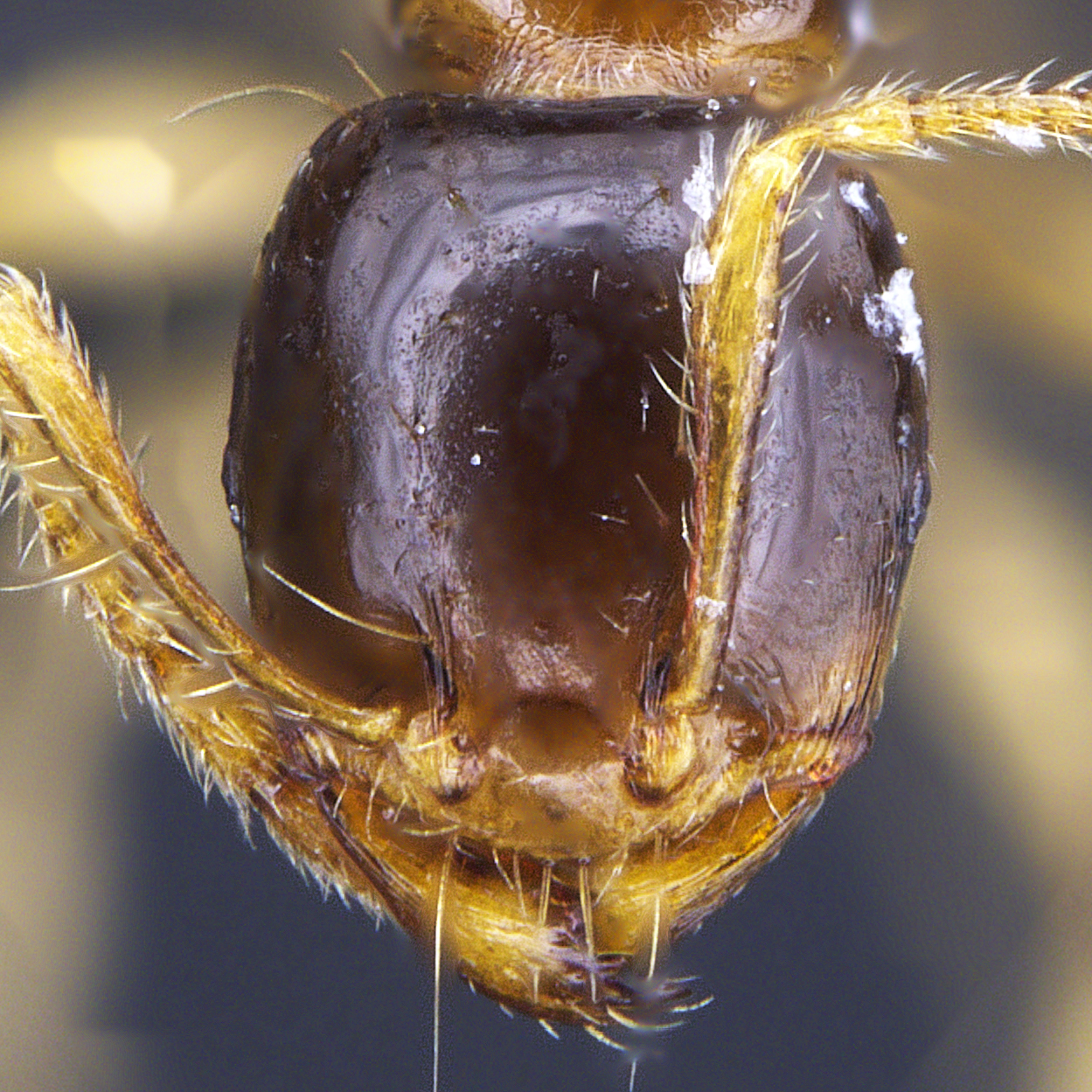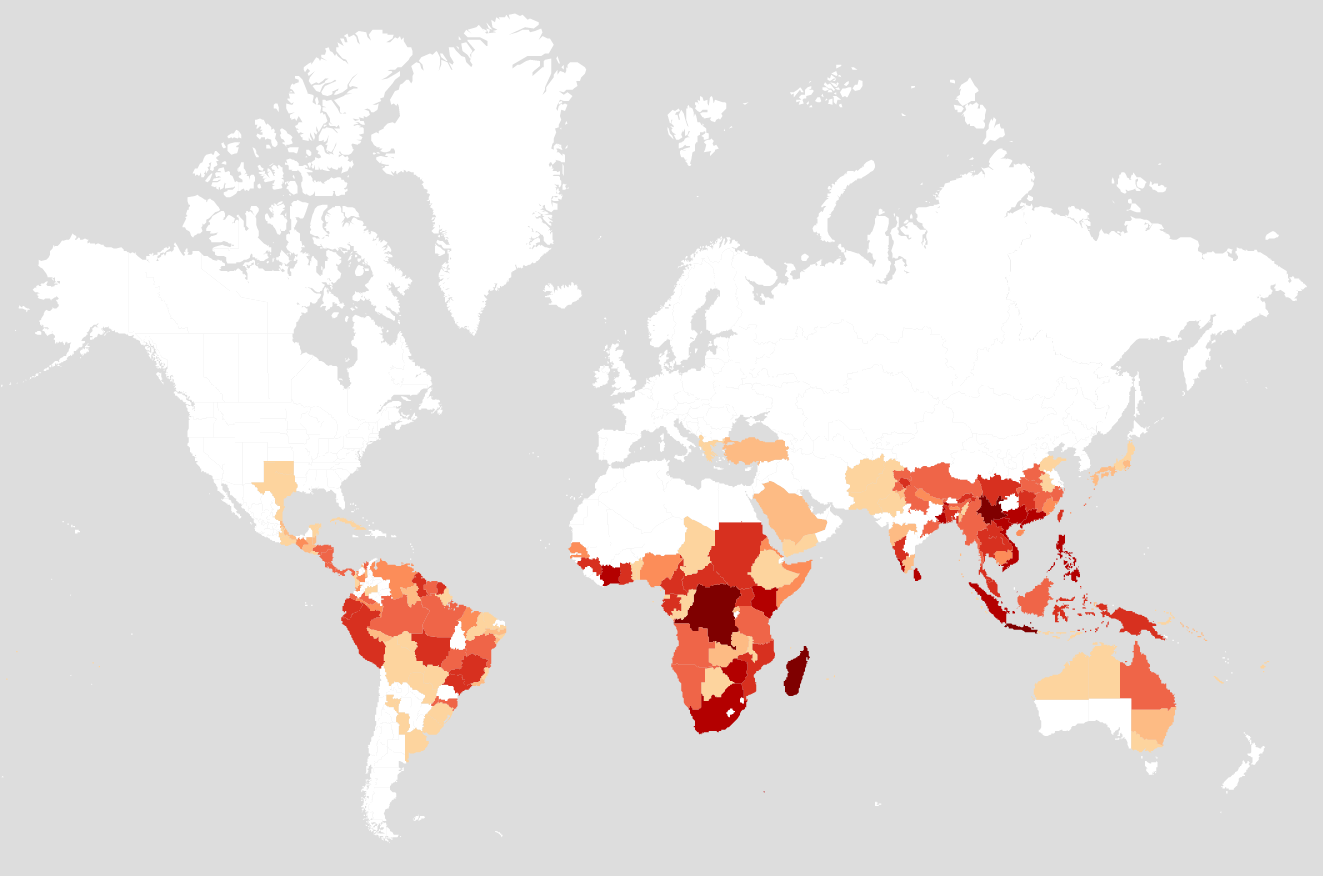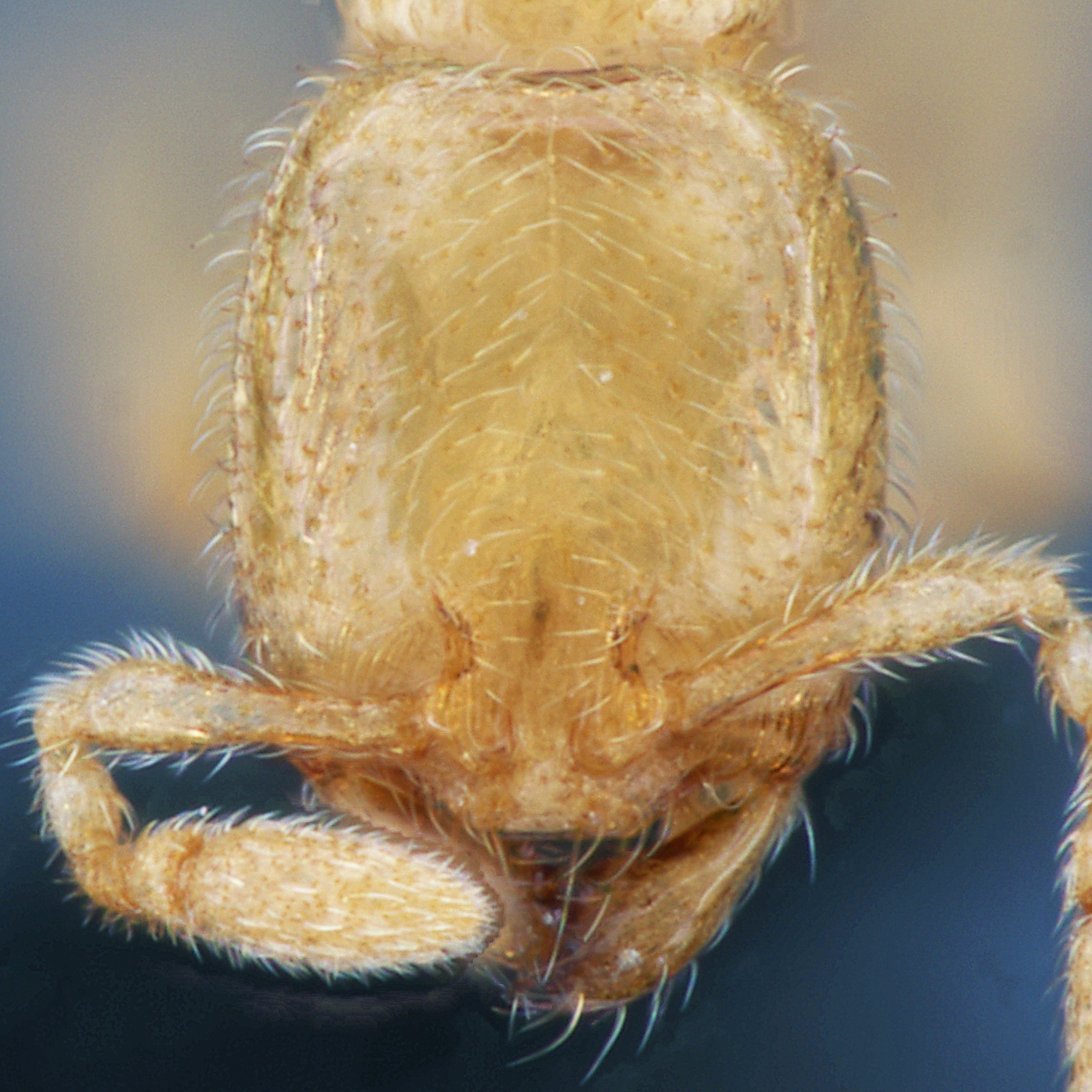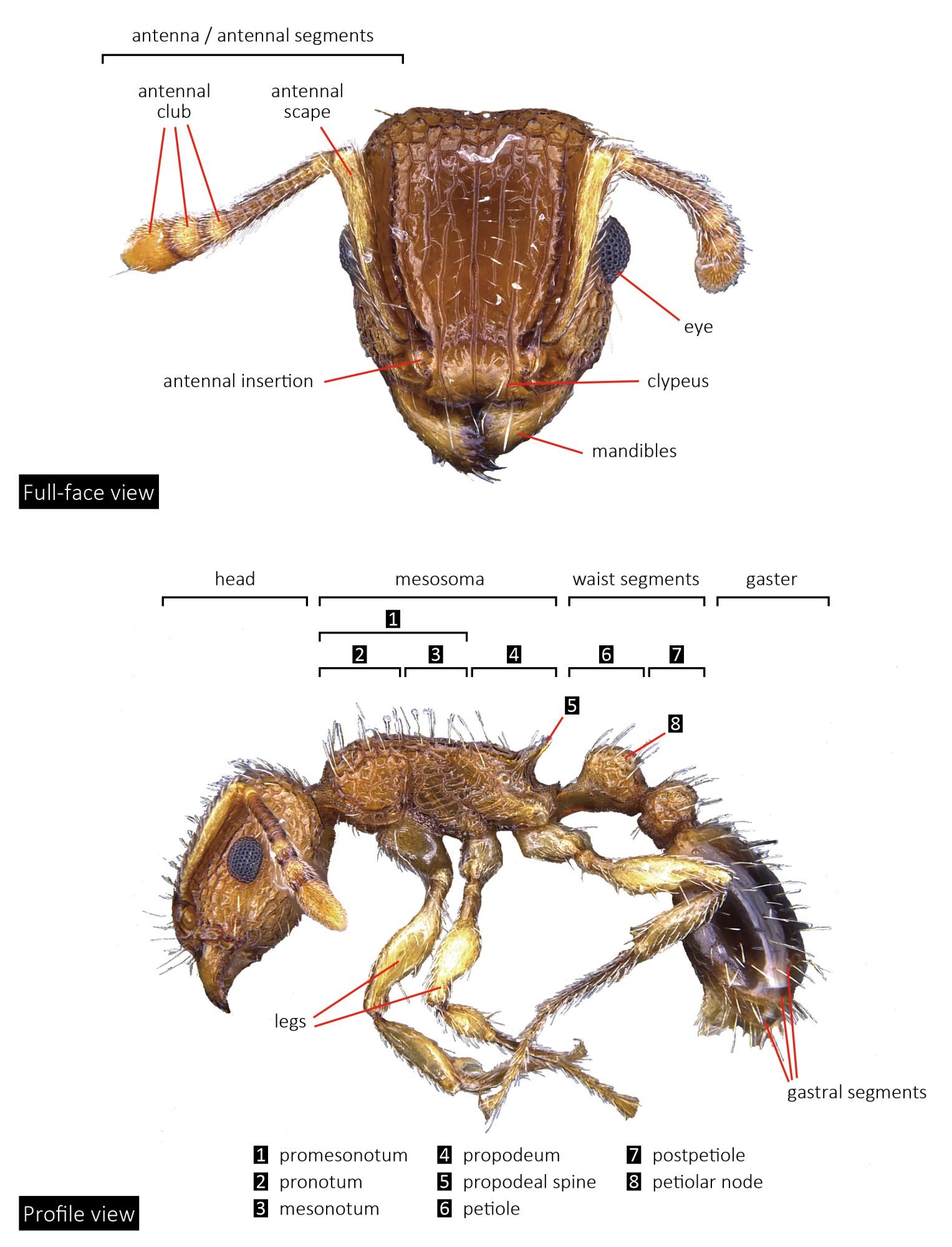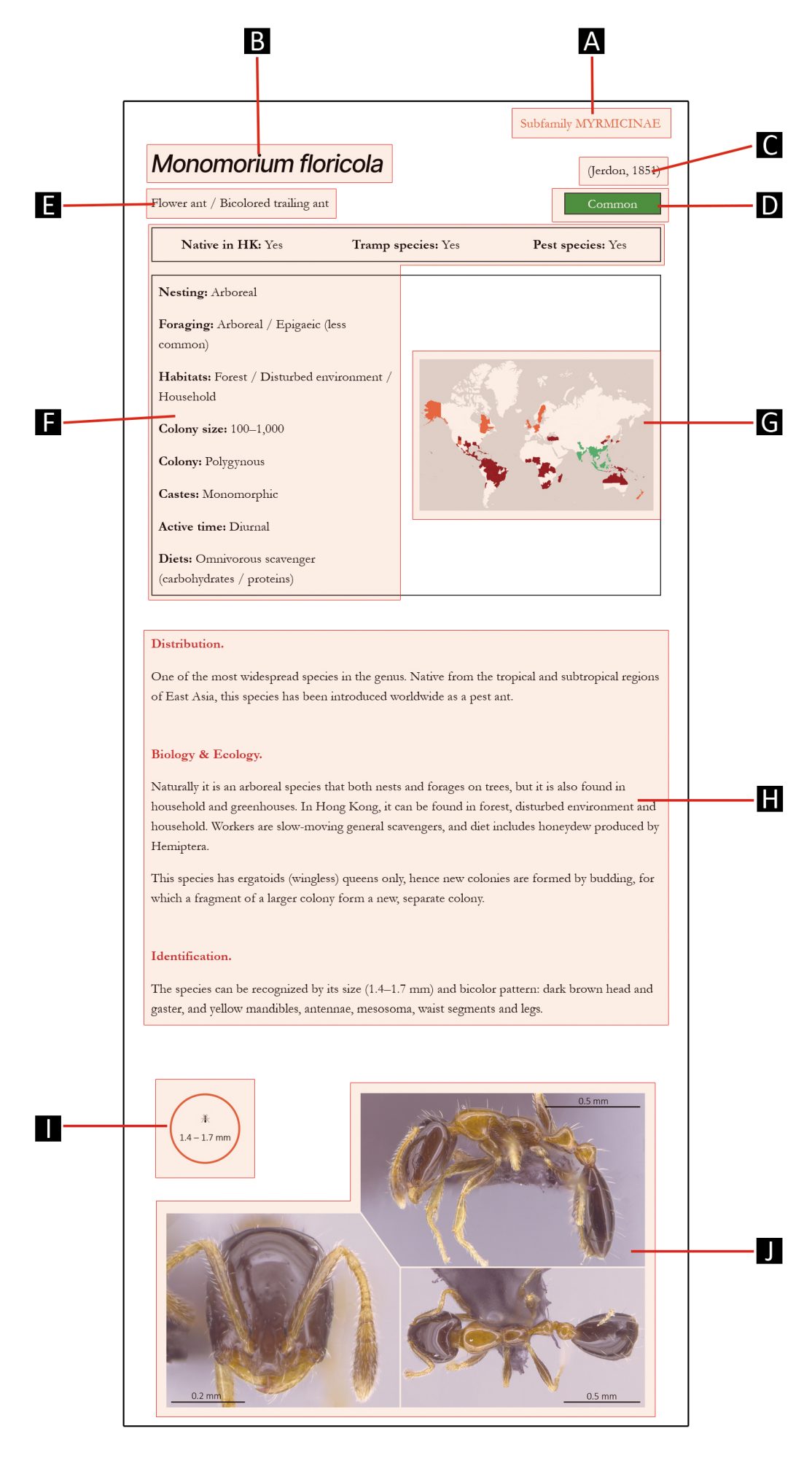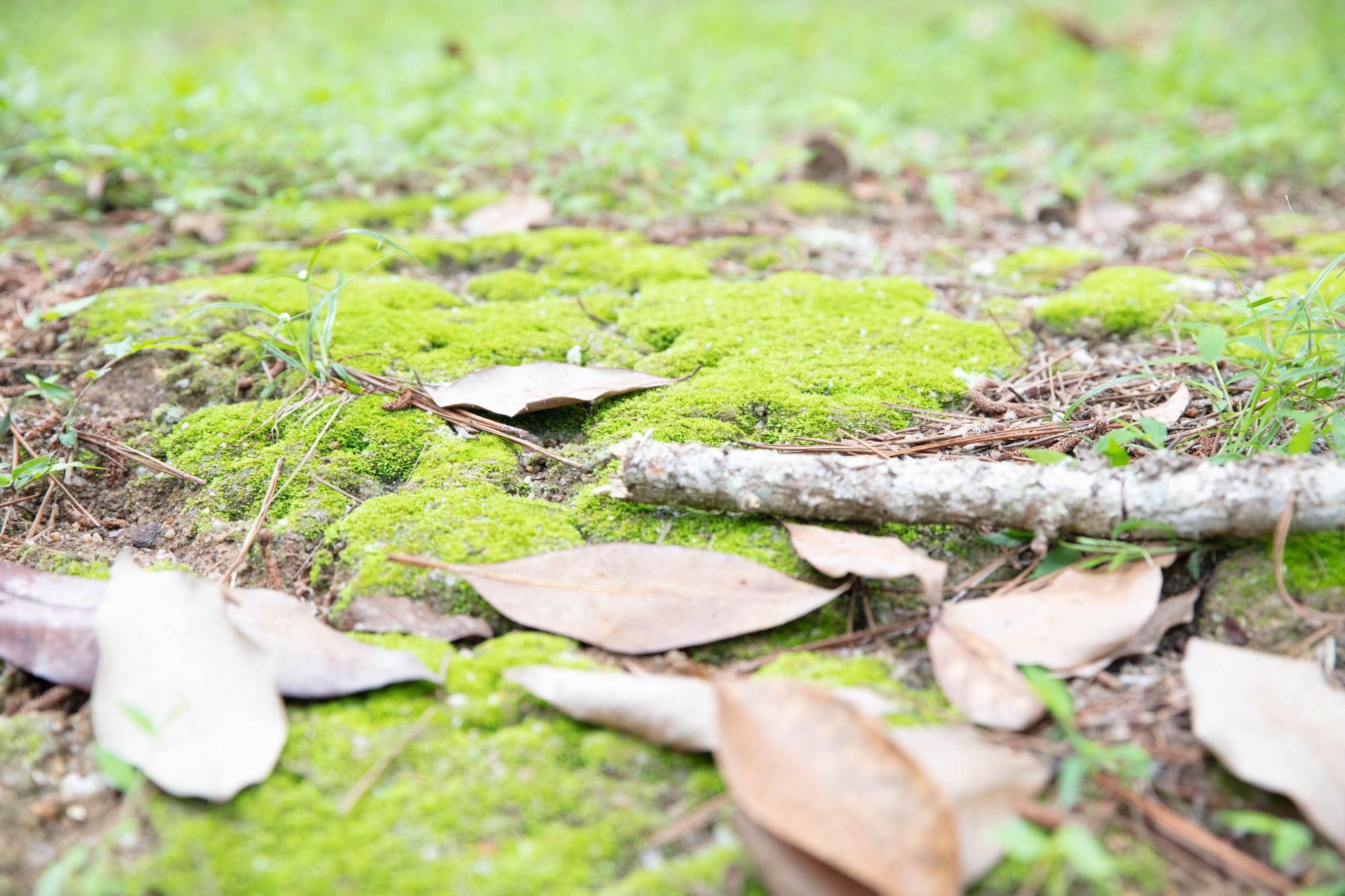
Subfamily MYRMICINAE
GENUS
Carebara
Westwood, 1840
Distribution.
A large ant genus with 223 species described. This genus has a widespread distribution, but is mainly restricted to tropical and subtropical regions.
Biology & Ecology.
Carebara species mainly nest within the soil, in leaf litter or parasitically in termite mounds. In the last case they seem to steal food from termites. Nests range from small to large, from just a hundred workers to hundreds of thousands of workers. Due to their small sizes and cryptic lifestyles, biology of most species remains unknown.
Most species are predators that feed on soil arthropods. Workers’ foraging activities is limited to within the soil or leaf litter of forest habitats.
This genus is known for high level of caste polymorphism in term of size, for which the dry weight of the largest major worker could be hundreds of times that of the smallest minor worker. In some species queens are also much larger than workers.
Identification.
Carebara species are very small to medium in size for minor workers (0.8–4 mm), and small to large for major workers (2–10 mm). Many species are pale yellow to yellow in color due to their cryptic lifestyle, but some species have darker coloration. They can be recognized by their reduced eyes, large subrectangular head and antennae with 2-segmented club.

Species in this genus
